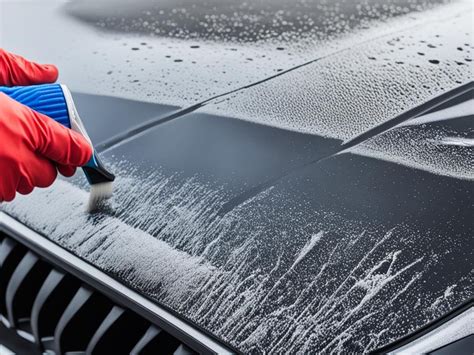Overspray Removal: Easy Methods for a Flawless Finish
Achieving a professional-looking paint job, whether it's a car, furniture, or a home project, requires meticulous attention to detail. One of the biggest hurdles to a flawless finish is overspray – that annoying mist of paint that lands where it shouldn't. Fortunately, removing overspray doesn't have to be a daunting task. This guide explores easy and effective methods to tackle overspray and achieve that perfect, professional finish you've been aiming for.
What is Overspray?
Overspray refers to the tiny paint droplets that escape the intended area during spraying. It can result from improper spray technique, excessive pressure, or poor ventilation. While a small amount might be easily overlooked, significant overspray can dramatically affect the final appearance, leaving a hazy, uneven finish. Different types of paint will also overspray differently, with some having a heavier, wetter consistency than others, thus affecting how easily they can be removed.
How to Remove Overspray: A Step-by-Step Guide
The best method for overspray removal depends on the surface and the type of paint. However, several techniques consistently deliver excellent results.
1. Prevention is Key: Best Practices for Minimizing Overspray
Before even considering removal, let's talk prevention. A little forethought can save you a lot of time and effort:
- Proper Surface Preparation: Clean and mask off areas meticulously. This includes using painter's tape, drop cloths, and plastic sheeting to protect surfaces.
- Consistent Spray Technique: Maintain a consistent distance and speed while spraying to avoid heavy build-up in one area.
- Appropriate Spray Pressure: Use the recommended pressure for your paint and sprayer to minimize overspray.
- Good Ventilation: Ensure adequate ventilation to prevent paint particles from settling on unintended surfaces.
2. Removing Overspray from Hard Surfaces (e.g., Cars, Furniture)
For hard surfaces, these methods are most effective:
-
Wet Wiping: For fresh, wet overspray, a clean, damp cloth is often sufficient. Gently wipe away the paint before it dries. This works best for very light overspray.
-
Razor Blade Scraper: For stubborn, dried overspray, a sharp razor blade can be effective. Hold the blade at a shallow angle to avoid scratching the underlying surface. Use gentle, controlled strokes. This method is ideal for flat surfaces.
-
Automotive Detailing Clay Bar: For a paint-friendly option on car paint, a clay bar can gently lift away stubborn overspray without scratching the surface. Always use a lubricant (like detailing spray) with the clay bar.
3. Removing Overspray from Soft Surfaces (e.g., Fabric, Carpet)
Overspray on fabric or carpet is trickier, requiring more delicate techniques.
-
Gentle Vacuuming: For dry overspray, a vacuum cleaner with a soft brush attachment can be effective. This works best for light overspray.
-
Spot Cleaning: For stubborn spots, use a small amount of soapy water and a soft cloth or sponge. Gently blot (don't rub) the area to avoid spreading the paint.
-
Professional Cleaning: For heavy overspray on delicate fabrics, professional cleaning may be necessary.
4. Using Commercial Overspray Removers
Several commercially available overspray removers are specifically designed to dissolve and lift away paint. Always follow the manufacturer's instructions carefully. These products are particularly useful for removing stubborn overspray from various surfaces.
Frequently Asked Questions (FAQs)
Can I use a pressure washer to remove overspray?
While a pressure washer might seem like a quick solution, it's generally not recommended. The high pressure could damage the underlying surface or spread the overspray further. It's best reserved for cleaning large areas where overspray is minor.
What's the best way to remove overspray from glass?
For glass, a razor blade scraper (used carefully) or a glass cleaner and a microfiber cloth work well. Always test on an inconspicuous area first.
How do I remove overspray from car paint without damaging the clear coat?
Using a clay bar with a lubricant, as mentioned earlier, is a safe and effective option for removing overspray from car paint without harming the clear coat. Gentle washing and polishing can further enhance the finish.
What if I accidentally got overspray on my newly painted wall?
If you've gotten overspray on your freshly painted wall, act quickly. Wet overspray is much easier to clean. A damp cloth and gentle wiping may be enough, but for dried overspray, carefully consider using a very fine-grit sanding sponge and then repainting the affected area.
By following these techniques and taking preventative measures, you can significantly reduce the hassle of overspray removal and achieve a professional, flawless finish for your next project. Remember to always test any cleaning method on an inconspicuous area first to ensure it doesn't damage the surface.

